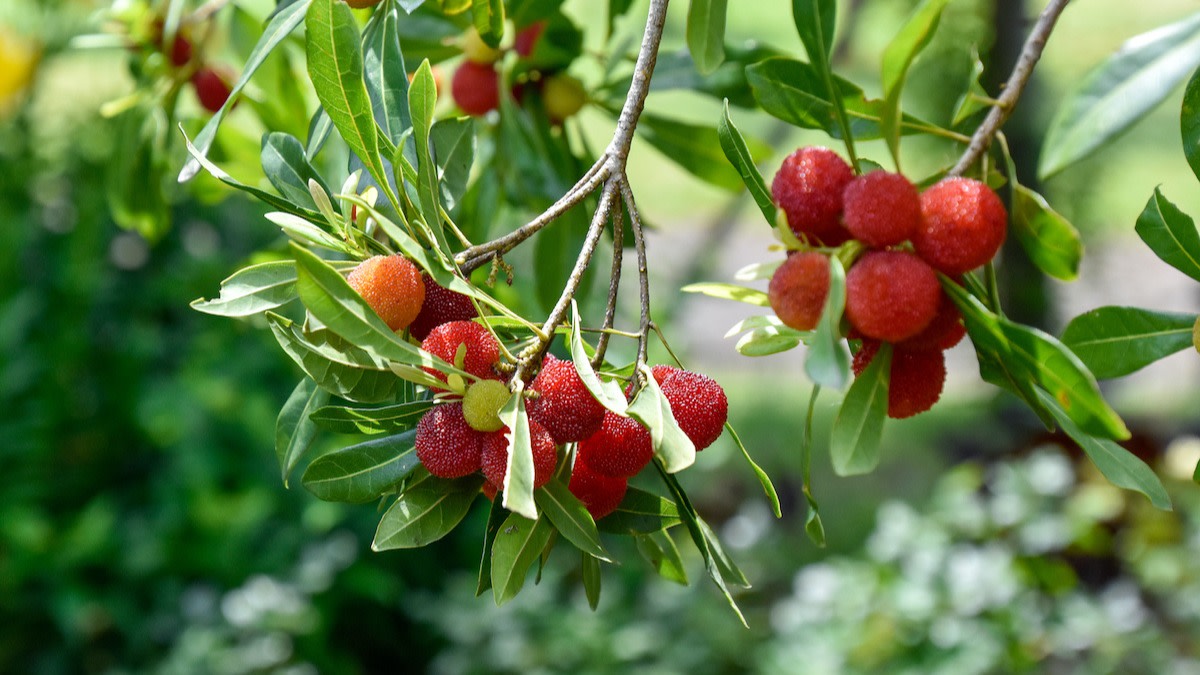Bayberry Shrub Care: How to Grow and Care for Bayberry Shrubs
Written by MasterClass
Last updated: Nov 19, 2021 • 3 min read
Famous for providing a fresh, wintery scent to soaps and candles, the northern bayberry grows slowly but steadily in the soils of eastern North America.
Learn From the Best
What Is Bayberry?
Northern bayberry (Myrica pensylvanica) is a type of deciduous shrub that grows throughout eastern North America. Also known as wax myrtle and candleberry, it is acclaimed for growing in poor soils and for its fragrant leaves and berries that often appear in candle-making and soap-making recipes.
The northern bayberry is part of the taxonomic family Myricaceae, which consists of dicotyledonous shrubs and small trees. It is not to be confused with its close relation, Myrica cerifera, which is known by the common names southern wax myrtle and southern bayberry. Southern bayberry grows larger and faster, but it lacks the silvery berries of its northern cousin. A more distant cousin, Myrica rubra, is better known as the Chinese bayberry. The Chinese bayberry grows as a tall tree in its native habitat of eastern Asia.
5 Common Uses for Bayberry
The bayberry shrub is prized for several uses.
- 1. Landscape use: As a semi-evergreen plant, the bayberry can provide varying amounts of foliage throughout the year. This makes it useful as a hedge plant.
- 2. Soil improvement: Bayberry plants can survive in acidic soils, alkaline soils, and nutrient-poor soils. They are effective at nitrogen fixation, and they can improve the surrounding soil by depositing nitrous compounds over time.
- 3. Erosion control: Some landscapers plant bayberry in sandy soil near a riverbank or pond edge to help control erosion.
- 4. Candle-making: Bayberry candles can be found in shops throughout the eastern US. The fresh, peppery scent of bayberry evokes the New England coastline.
- 5. Cooking: Actual bayberries do not have enough flesh to be a true food source, but chefs sometimes use them to flavor soups and ciders.
3 Varieties of Bayberry
While the familiar fragrance of bayberry comes from northern bayberry shrubs, other types of bayberry plants also exist. Most are in the genus Myrica but some are in the genus Morella.
- 1. Bog myrtle: Also called sweet gale and sweet willow, this species' scientific name is Myrica gale. It grows in peat bogs in cool northern climates.
- 2. Southern bayberry: This warm-weather shrub has a rapid growth habit. Like the northern bayberry, its fragrant leaves are used in candle-making, but unlike its northern cousin, it does not produce silvery winter berries. Its scientific name is Myrica cerifera.
- 3. Chinese bayberry: Myrica rubra, or Chinese bayberry, grows as a tall tree in subtropical climates. It is known for its edible fruit, which is sometimes called a Chinese strawberry.
How to Plant Bayberry
Bayberry is legendary for its hardiness. You can plant it in nearly any type of soil, no matter how sandy or nutrient-poor. It converts airborne nitrogen into nutrients and can deposit those nutrients into the soil. Consider planting bayberry close to a water source, as it offers excellent erosion control. It can also withstand a good amount of salt, which makes it a popular seaside plant.
How to Grow and Care for Bayberry Plants
Bayberry plants are relatively easy to grow so long as you can provide the following conditions.
- 1. Hardiness: The northern bayberry is a native shrub in USDA hardiness zones three through seven. Southern bayberry shrubs can tolerate warmer climates (growing zones seven through ten). USDA zone seven may exhibit a mixture of northern and southern bayberry bushes.
- 2. Soil: Bayberries can survive in nearly any soil type. They do not require fertilizer or mulch; they get most of the nitrogen they need from the air. This makes growing bayberry quite easy, provided your garden is in the correct USDA hardiness zone.
- 3. Sunlight: Bayberry shrubs do well in full sun, but they can tolerate partial shade as well.
- 4. Watering: The bayberry naturally thrives in the fairly rainy climates of the eastern US. If you plant bayberry in an arid area, you will need to water it regularly and maintain adequately moist soil.
- 5. Pollination: The bayberry is dioecious, meaning each plant can only produce male flowers or female flowers. These flowers form in clusters called catkins. The flower color is yellow-green, but bayberries are not typically grown for ornamental flowers. Female plants will produce silvery-gray berries if they have been pollinated by a nearby male plant. These berries are a food source for songbirds (notably bluebirds), but they are too meager for human sustenance.
- 6. Pruning: The northern bayberry bush grows very slowly. Pruning is not advised, as it can take many seasons to regrow pruned foliage. Southern bayberry has a faster growth rate and can handle pruning in late winter and early spring.
Learn More
Grow your own garden with Ron Finley, the self-described "Gangster Gardener." Get the MasterClass Annual Membership and learn how to cultivate fresh herbs and vegetables, keep your house plants alive, and use compost to make your community—and the world—a better place.
